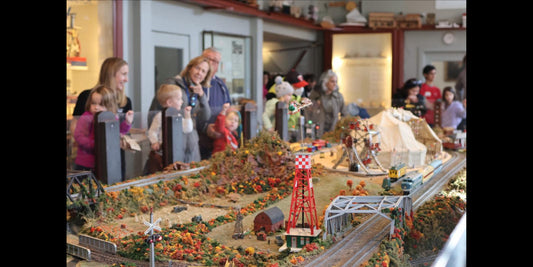Traveling up upper State Street, you pass seven or eight blocks of small shops and restaurants bearing that quintessential East Rock mix of lived-in but cared-for. By the time you hit the modest WWII memorial past Edwards Street, you’ve walked, biked or driven through just under a half-mile of charm, and maybe it’s begun to affect your mood. Your brain started out with what a nice street. Now it’s at life is good.
Then the road, a straight shot so far, begins to curve right, and other perceptible changes occur. The sidewalk seems a little more broken-up, perhaps slightly weedier. The trees look haggard. A string of big boarded-up buildings comes into view. White and orange signs, roadside, send up caps-locked flares: “BRIDGE CLOSED AHEAD.” “ROAD CLOSED TO THRU TRAFFIC.” High chain-link fences start to choke off any breaks in the surrounding architecture, and, ahead of you, another mass of white-and-orange signage peeks into view, this time right in the middle of the road—a dead end of rubber cones, concrete barricades and more chain-link fencing.
You’ve hit one side of the State Street Bridge reconstruction project, partly shaded below the rusting I-91 South and North overpasses, and you aren’t the first. Approved by the Board of Alders in 2008, with the construction contract awarded in early 2009, this important access point connecting East Rock to Fair Haven was closed off for work in October 2010. The closure was supposed to last about a year; instead, setbacks have caused huge delays, with the Connecticut Department of Transportation most recently indicating that it won’t reopen the bridge until summer 2015, or about four years late. As for budget, construction costs were once expected to amount to $5.3 million, the price of the winning contract bid; now they’re projected to hit $25 million.
sponsored by
It’s some consolation to locals that the vast majority of the ballooned budget is on federal and state books, not the city’s. Yet the passage and its blockage are still significant to people on both sides of the divide, for one fundamental reason: not having the bridge makes everyone’s lives harder. Commuters, travelers and wanderers have to find alternate routes, which aren’t so forthcoming in that part of town; businesses lose incidental custom; people living in nearby residential areas get extra unwanted traffic rerouted through their otherwise quiet streets.
To be fair, the immediate bridge area wasn’t looking great before reconstruction commenced, and neither was the bridge itself. Its original piled foundation, in place since 1920, had decayed to the point where, without demolition and new construction, collapse was deemed inevitable. And it certainly didn’t have the aesthetic joys of other bridges, given how short in length and low to the ground it was, and how little of the spanned body of water, the Mill River, it let you see, and how constrictive the dual overpasses on either end could feel while passing between them.
Actually, you can still experience this feeling, and you don’t have to hop any fences to do it. You don’t even have to leave the house. Through a quirk of Google Maps’s street-view mode, you can “time-warp” between the bridge site as it was in June 2011, after closure, and the site as it was in April 2008, before closure. To do it, click this link, which starts you out in 2011; then use your mouse to “walk” forward within the interface.
sponsored by
In real life, where space-time is less flexible, you have three basic options for getting from one side of State Street to the other across the river. The most obvious choice is I-91, though, on the East Rock side, you have to head a ways back down State Street to get onto it. Alternatively, if you’re in a mood to detour through the heart of East Rock, make your way up to Willow Street, which intersects with State on the Fair Haven side of the river. (Coming from the Fair Haven side, find your way to Blatchley Avenue, which turns into Willow to the north, at State.) The other, perhaps most straightforward option is to use Humphrey Street to get across the river in either direction, taking James Street to get between Humphrey and State on the eastern side.
Point is, where there’s a will, there’s a way—and while we’re at it, let’s hope the same maxim applies to fixing bridges.
Written and photographed by Dan Mims.









